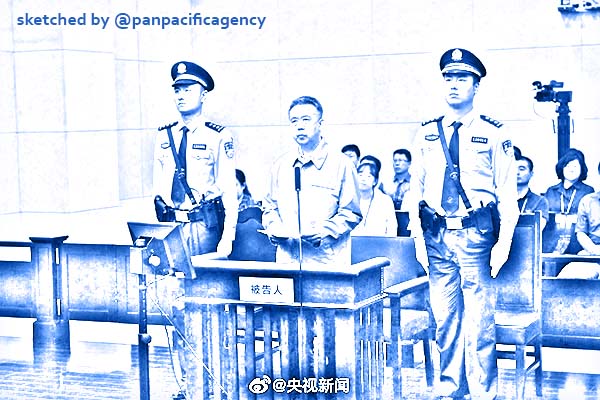India records highest rate of bribery in Asia: survey

Meng Hongwei appears in court on bribery charges in Tianjin on Thursday. Photo: Weibo. Sketched by the Pan Pacific Agency.
NEW DELHI, Nov 26, 2020, The Hindu. India has the highest rate of bribery and use of personal links to access public services such as healthcare and education in Asia, according to a survey released by global civil society Transparency International, The Hindu reported.
“India has the highest overall bribery rate (39%) and the highest rate of citizens using personal connections (46%), following India, Indonesia and China have the second and third highest rates of people using personal connections with 36% and 32% respectively.” says the report titled “Global Corruption Barometer – Asia”.
It notes that in India, 50% of those involved in bribery are asked to bribe, while 32% of those who used personal connections say they will not receive the service otherwise.
“Of the people surveyed in India, who came into contact with the police, 42% had paid bribes. The use of bribes was also rampant (41%) to obtain official documents such as identity papers. Use of personal connections was also largely made in dealings with the police (39%), procurement of identity documents (42%), and in relation to courts (38%)”, it states.
Survey in 17 nations
Across Asia, Transparency International surveyed 20,000 people in 17 countries- with six public services such as police, courts, public hospitals, procurement of identity documents, and utilities covered for the report. The survey was conducted between June-September last, recording their activities, perception, and experiences with corruption in the past 12 months.
As plaguing factors, slow and complicated bureaucratic process, unnecessary red- tape and imprecise regulatory frameworks force people to seek alternate solutions to access basic services through personal links and petty corruption, observes the report.
An issue of concern that reflects in the report is that while reporting of corruption is critical to control the spread, as many as 63% of those in the country are particularly concerned about retaliation.
“Both national and State governments need to streamline administrative processes for public services, implement preventative measures to combat bribery and nepotism, and invest in user-friendly online platforms to deliver essential public services quickly and effectively,” it suggests.
Government corruption
Three-quarters of the respondents believe that government corruption is a big problem, with nearly one in five people (19%) paying bribe when accessing public services in the previous year. This is equivalent to about 836 million people.
Almost 38% of people think corruption has seen an increase in the previous 12 months, while 28% think it’s the same.
In Nepal and Thailand, the majority of citizens (58% and 55% respectively) think corruption has increased. And a majority of citizens in China (64%), the Philippines (64%), and Cambodia (55%) think corruption has declined, the report says.
Cambodia follows India with a bribery rate of 37% and Indonesia at 30%. Maldives and Japan maintain the lowest overall rate (2%). South Korea has 10% and Nepal 12%. However, even in these countries, governments could do more to stop bribes for public services, urges Transparency International.
It points out that use of personal links to access to public services is also dominant across Asia. More than one in five people (22%) who access public services use their personal links to receive the service they need.
India has the highest rate of citizens using personal links to access a service, at 46%, followed by Indonesia (36%) and China (32.%). Conversely, in Japan and Cambodia, a small minority of those who access public services use their personal connections, only 4%, and 6% respectively.
India is in the 80th position among 180 countries in the Corruption Perception Index, in the previous report issued by Transparency International that was released in January in Davos at the World Economic Forum.